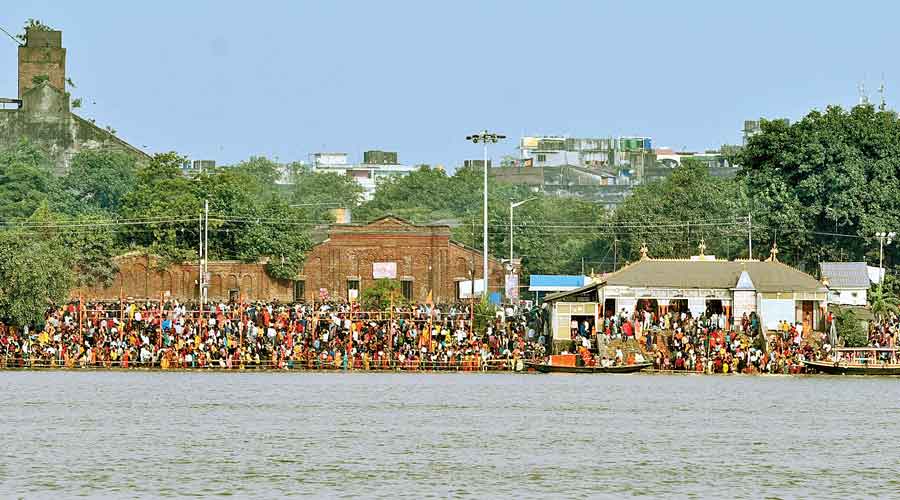The air quality at several monitoring stations in Kolkata and Howrah had dropped to poor or very poor between late Wednesday and early Thursday, around the time firecrackers were burst by Chhath worshippers.
At Bidhannagar, the air quality was poor for a long time between 10pm on Wednesday and 6am on Thursday.
The monitoring station on the BT Road campus of Rabindra Bharati University recorded ‘very poor’ air for a long duration between 10pm on Wednesday and past 6am on Thursday.
For a couple of hours before and after this window, it had recorded poor air. The worst air quality index (AQI) at the station was 322.
The various categories of air are good (with AQI varying between 0 and 50), satisfactory (51-100), moderate (101-200), poor (201-300), very poor (301- 400) and severe (401-500).
Most air quality monitoring stations in Kolkata and Howrah reported poor, very poor and even severe air about 30 hours after Kali Puja or Diwali, according to data available on the Central Pollution Control Board (CPCB) website.
The AQI value is arrived at after taking into account the concentration of various pollutants in the air.
According to the CPCB, poor air can cause “breathing discomfort to most people on prolonged exposure”.
Very poor air can trigger “respiratory illness on prolonged exposure”.
At Howrah’s Ghusuri, the condition was more alarming. The air quality there had become severe, the worst category, for a long time between 10pm on Wednesday and 2am on Thursday. The AQI value had reached 430 at its worst.
According to CPCB, severe air “affects healthy people and seriously impacts those with existing diseases”.
Many residents complained that they could hear sounds of firecrackers bursting in their neighbourhoods.
The Telegraph had visited Babughat on Wednesday evening and sounds of firecrackers bursting in the vicinity could be heard from in front of Calcutta High Court.
The readings in the monitoring stations reflected only the quality of the air in the immediate vicinity of the station. The real situation in areas far off where crackers were burst more frequently could be worse, said experts.
“We have only seven monitoring stations in Kolkata and they cannot reflect the situation of the entire city. It could be that pockets where firecrackers were burst indiscriminately were not close to any of them,” said Anupam Deb Sarkar, a professor of civil engineering at Jadavpur University, who specialises in environmental engineering.
